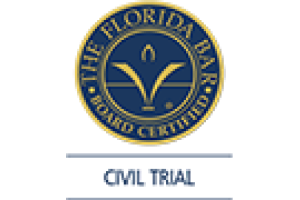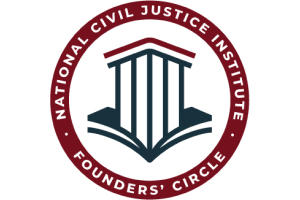Client Reviews
Forklift Accidents
A forklift is a type of powered industrial truck equipped with a pronged device in the front, intended for use carrying heavy loads. They are used in a number of industries, mostly to move materials.
Forklift injury lawyers at Associates and Bruce L. Scheiner, Attorneys for the Injured, understand there are a number of hazards these vehicles pose to those on a construction site, especially if they are improperly operated or maintained.
Examples of forklift accidents that can result in serious injury on-the-job include:
- Forklift falls between unsecured trailer and docks
- Workers are struck by a forklift
- Lifts are accidentally driven off loading docks
- Forklifts fall while elevated on tines and pallets
- Worker is struck by falling material
- Worker is crushed between two vehicles
In fact, so dangerous is this work, the federal Fair Labor Standards Act bars anyone under 18 from operating or even riding on a forklift for non-agricultural work. Despite this law, several underage workers have been killed in recent years in occupational forklift accidents.
Forklift Accident Analysis
The Occupational Safety & Health Administration (OSHA) estimates forklift accidents cause 85 work-related deaths every year in this country. Another 35,000 workers are seriously injured, and nearly 62,000 incur injuries classified as “non-serious.”
One out of every 10 forklifts currently in use is involved in some kind of accident each year. Given that the average forklift has a useful life of about 8 years, this means 90 percent of all forklifts are going to be involved in some type of accident at some point during their use.
Safe operation of a forklift depends highly on the kind of lift it is and the atmosphere in which it’s being operated.
Types of forklifts include:
- Electric motor rider trucks
- Electric motor narrow aisle trucks
- Internal combustion engine trucks (with either solid/cushion tires or pneumatic tires)
- Electric internal combustion engine trailers
- Rough terrain forklift trucks
Keeping everyone safe on the job means the forklift operator needs to be trained and certified in how to handle the specific vehicle he or she is assigned to drive.
For example, in a sit-down, counterbalanced high-lift rider truck, the operator is at greater risk for a falling load than the operator of a motorized hand truck, particularly when the load is lifted at significant heights. That’s why training on the actual vehicle is so important.
Another issue that could be resolved with proper training is tipover response. Forty-two percent of forklift deaths are the result of an operator trying to jump from a tipping vehicle. First of all, tipping can usually be prevented by the operator keeping the load as low as possible. Secondly, it’s important for the operator to stay in the vehicle if it tips – even if this seems unnatural. Instinct tells us to jump. But what happens is the driver often lands on the floor, usually right in the path of the overhead guard. As a result, workers may suffer a crushing injury to the back, neck or head.
By training workers to seat belt and stay inside the forklift if it tips, companies could prevent serious injury in numerous cases annually.
Workers also must be trained because otherwise, they pose a risk to their fellow workers and other pedestrians in the area. Operators need to be well-versed in proper backup techniques, the correct way to complete turning processes and how to signal to pedestrians in the work area. Knowing how to properly communicate with other workers can be critical.
In addition to ensuring operators are properly trained, companies must ensure forklifts are properly maintained, and that any that are malfunctioning be placed out of service until they are repaired. Brakes, clutch, transmission or steering issues can all cause a serious workplace accident.
Workplace Conditions and Forklift Accidents
OSHA reports a number of conditions in the workplace that may contribute to a forklift accident. These could include:
- Slippery conditions (oil, water, grease, mud, gravel, etc.). Operators should use great caution and move slowly when encountering these conditions.
- Obstructions or uneven surfaces. Danger of tipover increases when traveling over obstructions or in holes and bumps.
- Floor loading limits. If forklift weight exceeds load of floor, forklift could collapse.
- Overhead clearance. By failing to ensure clearance, there is a risk of not only damage to overhead fixtures and the load, but also an increased risk of tipover.
- Pedestrian traffic. Forklift operators should always yield the right over way to pedestrians. Honk the horn when backing up. Slow down at intersections, corners or wherever vision is obstructed. Spotters should be used for blind spots.
- Passengers. No passenger should be allowed on the forklift, as there is a danger of falling.
- Loading docks. High risk of falling off. Docks should have painted edges to improve visibility.
- Elevators. Make sure the elevator is not overloaded and has sufficient clearance and space inside.
Workers who suffer injury as a result of a forklift accident in Fort Myers or elsewhere in Southwest Florida should seek immediate consultation from an experienced injury attorney.
Contact Associates and Bruce L. Scheiner, Attorneys for the Injured, for a free and confidential consultation to discuss your rights. There are no fees or costs unless we win. Offices in Fort Myers, Cape Coral, Naples and Port Charlotte.
Call 800-646-1210 for a Free Consultation












